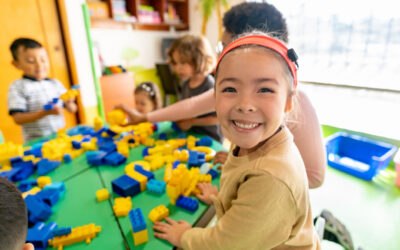The teaching and learning process can be magical for educators and students alike. However, creating an effective learning environment requires purposeful planning, an understanding of educational theories, and mastery of digital tools. Let’s explore how to bridge the gap between ideas and classroom experiences through strategic edtech integration.
Understanding the Purpose of Tools
Tools for teaching and learning are just that…tools. The tool you select should match the job you’re doing. You wouldn’t select a hammer to install a glass window unless it was specifically designed for that purpose. The wrong hammer could break the fragile glass. You evaluate the purpose before you select the tool. You might have two great tools available, such as super glue and caulk. But how do you determine which one to use? It depends on your purpose or what you hope to accomplish in the end. Regardless of the environment, we must remember that tools are just tools and they assist us with the job at hand. How does this relate to the magic in teaching and learning? For decades, even centuries, educators and theorists have tried to determine what triggers the brain to learn and the right hooks that keep the learner engaged in the learning process. We always look for something to help create the magic of learning. This puts us in a state of always looking for better tools and better ways to assist with the job. From quill and ink to pencils to technology-based devices, we’ve had many tools that allow our learners to demonstrate what they have learned.
Picking the Right Tools
When planning the learning experience, we put the learner and the purpose of the learning first. What we want the result to be is what drives how we plan to get the learner there. We think about what might be an exciting way to hook the learner in during the introduction and then what is needed to provide the instructional or exploration piece. Once the knowledge and skill information has been provided, we ensure the learner has an opportunity to practice and course correct their misunderstanding or receive encouragement for what they’ve understood. This sets our learners up to apply their knowledge and skills and demonstrate that they can transfer what they’ve learned into new experiences. As educators, we are guiding, assessing, and redirecting all along the way. Our experience with teaching and learning is what helps us select the right techniques and tools to use. As we determine the tool(s) to integrate into the teaching and learning experience, we should answer the following questions:
- What skills do my learners have?
- What new skills will they need when using the tool?
- What level of cognitive load might exist when learning a new topic and tool at the same time?
- Which tool supports or enhances the experience?
- Does the tool help the learner meet the expected learning goal?
The selected tool must enhance the learning experience, align with your teaching and learning goals, and support the needs and abilities of the learners.
Models for Technology Integration
Learning theories guide educators towards effectively integrating technology into the learning experience. Four common theories are:
- RAT Model – uses technology to replace, amplify, and transform learning to create a more engaging, personalized, and meaningful learning experience
- TPACK (Technological Pedagogical Content Knowledge) Framework – describes the knowledge and skills required for effective technology integration
- Rigor Relevance Framework – examines curriculum, instruction, and assessment based on 4 quadrants that guide a pedagogical shift to ensure learners acquire knowledge but also develop the ability to apply, assimilate, and adapt to create new knowledge in meaningful ways
- SAMR (Substitution, Augmentation, Modification, Redefinition) Model – provides common knowledge language for educators as they strive to personalize the learning experience and help their learners visualize complex concepts to transform their use of technology
These frameworks and models all provide unique insights and emphasize different aspects that can help educators develop a comprehensive understanding of how to effectively integrate technology. By combining aspects of the models, based on the intended purpose of the learning, educators can create engaging and impactful experiences for their learners.
Putting a Tool and Model Together
Models may provide guidance, but putting a model and tool together is what provides the greater impact on the teaching and learning experience. In this example, the SAMR Model guides how to use a digital tool to enhance or transform learning. Padlet is a digital board used to collect, organize, and present information, images, videos, and more. The levels of SAMR can be grouped by enhancement and transformation. Substitution and augmentation enhance the learning experience whereas modification and redefinition provide opportunities for transformation. At each level of SAMR, Padlet can be used for a different purpose as demonstrated here.

In the following lesson example for 5th-grade social studies, Padlet is used to integrate technology at each level of SAMR.
- At the Substitution level, in addition to having a paper word wall, students would have access to a digital word wall with the same information.
- The Augmentation level would have students conduct research and use their wall as an organizational tool to collect and track information about a leader in the national government.
- At the Modification level, Padlet could be used by students working in groups to collaborate and share their research findings about their select leader in the national government. Additionally, students would include information about why that person was considered a past or present leader in society.
- The Redefinition level would have students work in groups to create a video about the group’s researched leader and their impact on society then post the video to the class wall in Padlet. This class wall could then be used as a digital gallery walk. Individual learners would then learn from each group’s videos. This class wall would provide for sharing feedback and asking questions, transforming Padlet into a tool for communication.
Integrating to Make Magic
As the technology tools available for teaching and learning advance, educators are able to enhance learning in new ways. Learners’ interests, curiosity, and ways of demonstrating knowledge and skills are changing along with the tools. As educators, we must determine how the established and new theories can be used to integrate technology and positively impact each learning experience. This learning transformation cycle continues to evolve as learning theory, emerging technologies and students work as interdependent components tied to transforming learning.

How we integrate technology into the learning experience can have an impact, both positive and negative. It is up to educators to create the magic and to prepare our learners for success in the learning environment and digital world.

Kelli Erwin
Director of Education
Dr. Kelli Erwin has been in the field for K-12 education for over 20 years as a classroom teacher, technology lab teacher, GT specialist and a district-level instructional specialist. In her role as Director of Education for Learning.com, she incorporates her years of experience along with new trends and pedagogical understanding to design and create learning experiences and support resources to meet the varying needs of students and teachers.
Further Reading
Examples of Abstraction in Everyday Life: How Students Already Use Computational Thinking
Computational thinking, though often perceived as a concept limited to technology or coding, is a valuable problem-solving skill that students...
Understanding Abstraction: Everyday Examples and The Role of Abstraction in Computational Thinking
Abstraction is an essential concept in computational thinking and problem solving, but it’s often one of the more challenging aspects to grasp. This...
7 Examples of Algorithms in Everyday Life for Students
For students new to coding, the process of algorithmic thinking can be challenging. Instead of providing an answer to a question—or even showing the...




